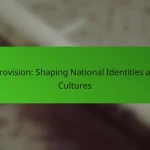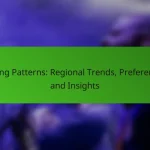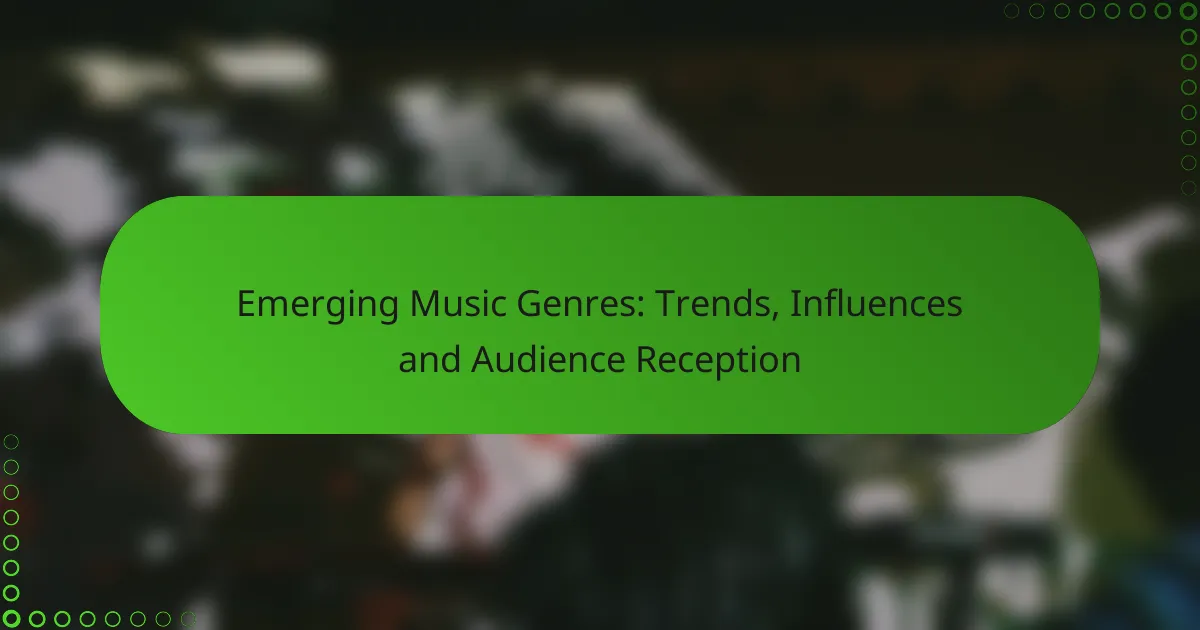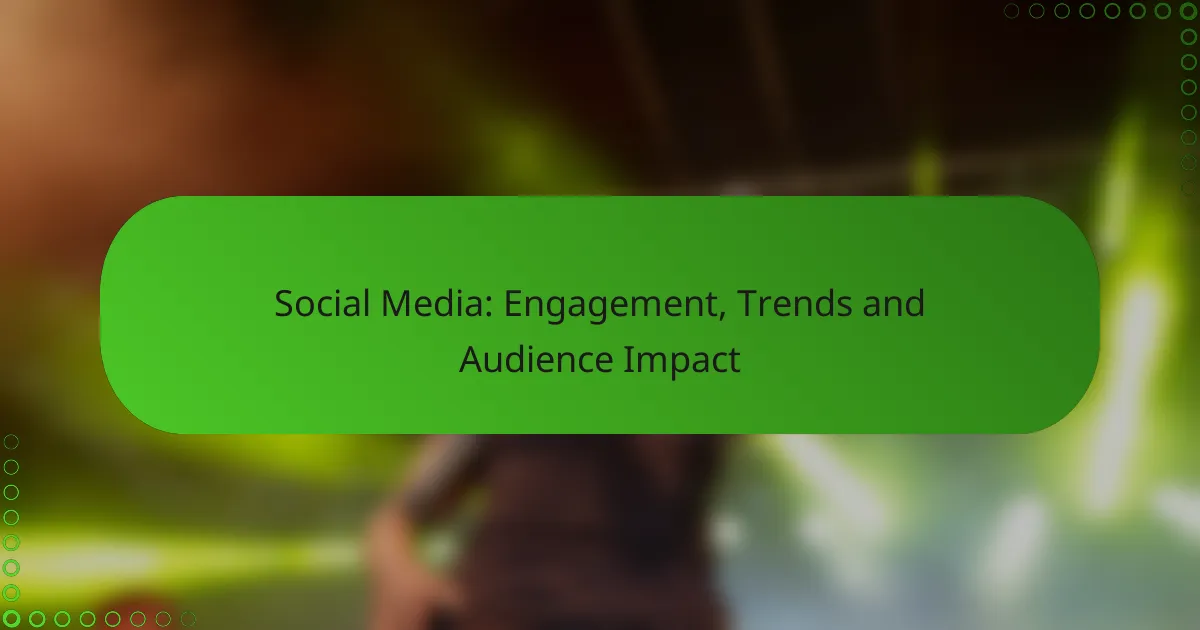In 2023, the landscape of emerging music genres showcases a rich tapestry of diverse influences and innovative sounds that resonate with audiences globally. Genres such as Hyperpop, Lo-fi Hip Hop, Afrobeats, Indie Pop, and Reggaeton are not only defining contemporary music but also reflecting the profound impact of technology and cultural exchanges on their evolution.
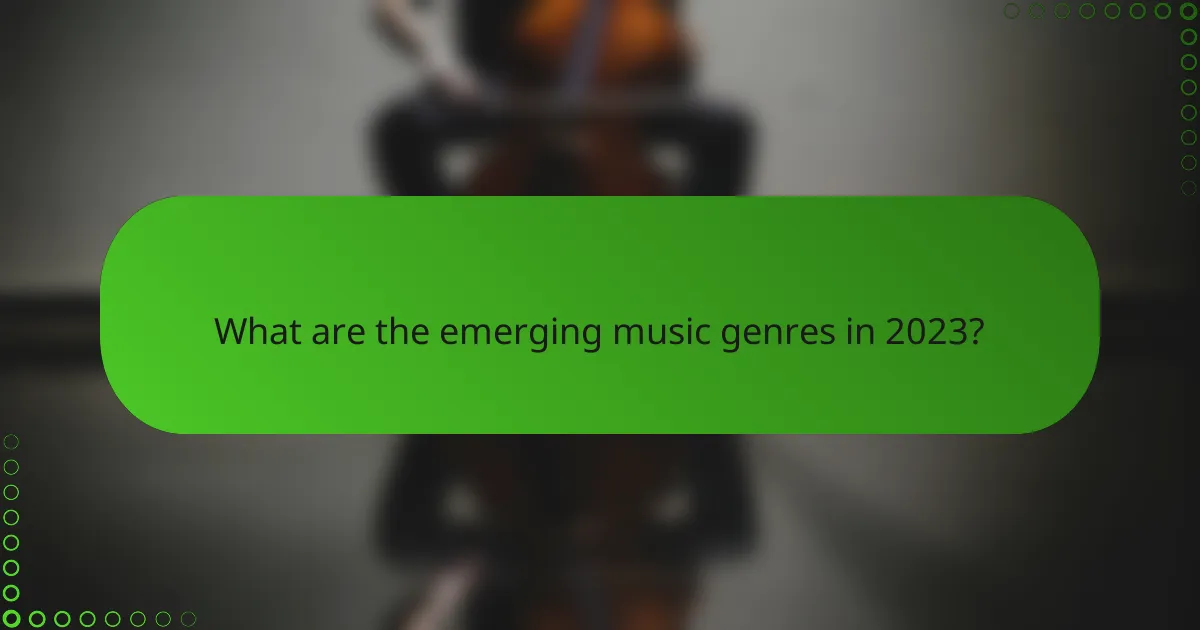
What are the emerging music genres in 2023?
In 2023, emerging music genres reflect diverse influences and innovative sounds, capturing the attention of listeners worldwide. Genres like Hyperpop, Lo-fi Hip Hop, Afrobeats, Indie Pop, and Reggaeton are shaping the contemporary music landscape, each offering unique characteristics and audience appeal.
Hyperpop
Hyperpop is characterized by its eclectic mix of pop, electronic, and experimental sounds, often featuring high-pitched vocals and heavy production. This genre embraces a playful and exaggerated aesthetic, appealing to younger audiences who enjoy its vibrant energy and boundary-pushing creativity.
Artists like 100 gecs and Charli XCX exemplify Hyperpop’s distinctive style, blending genres and incorporating digital elements. The genre often thrives on platforms like TikTok, where catchy hooks and viral trends can propel songs to popularity.
Lo-fi Hip Hop
Lo-fi Hip Hop is known for its relaxed beats and mellow soundscapes, often incorporating samples from jazz and ambient music. This genre has gained popularity as a background for studying or relaxing, with many listeners seeking its calming effects.
Playlists on streaming services often feature Lo-fi Hip Hop tracks, making it accessible to a wide audience. The genre’s DIY ethos allows independent artists to produce and share their music easily, contributing to its growth and community-driven nature.
Afrobeats
Afrobeats is a vibrant genre that blends traditional African music with contemporary pop and hip-hop influences. Originating from West Africa, it has gained international acclaim, with artists like Burna Boy and Wizkid leading the charge.
This genre is characterized by infectious rhythms and catchy melodies, often encouraging dance and celebration. Afrobeats has become a staple in global music charts, showcasing the rich cultural heritage of Africa while appealing to diverse audiences worldwide.
Indie Pop
Indie Pop is defined by its independent production and a focus on melodic, often introspective songwriting. This genre emphasizes authenticity and artistic expression, attracting listeners who appreciate its unique sound and personal storytelling.
With artists like Phoebe Bridgers and Tame Impala, Indie Pop continues to evolve, incorporating various influences from rock to electronic music. Its grassroots nature allows for a diverse range of sounds and styles, making it a favorite among music enthusiasts.
Reggaeton
Reggaeton combines Latin rhythms with hip-hop and dancehall influences, creating a dynamic and infectious sound. Originating in Puerto Rico, it has exploded in popularity across the globe, with artists like J Balvin and Bad Bunny leading the genre’s rise.
This genre is characterized by its catchy beats and often features themes of love, partying, and social issues. Reggaeton’s widespread appeal is evident in its collaborations with mainstream artists, further solidifying its place in contemporary music culture.

How are trends in music genres influenced by technology?
Trends in music genres are significantly shaped by technology, which alters how music is created, distributed, and consumed. Innovations in digital platforms and tools have democratized music production and expanded access to diverse sounds, leading to the emergence of new genres and styles.
Streaming platforms
Streaming platforms like Spotify, Apple Music, and YouTube have transformed music consumption by allowing users to access vast libraries of songs instantly. These platforms utilize algorithms to recommend music based on listening habits, which can rapidly elevate niche genres to mainstream popularity.
For artists, streaming offers a way to reach global audiences without the need for traditional record label support. However, the revenue model often favors quantity over quality, leading to a focus on producing catchy singles rather than cohesive albums.
Social media impact
Social media has become a crucial tool for artists to promote their music and connect with fans. Platforms such as TikTok and Instagram enable users to share snippets of songs, which can lead to viral trends and increased exposure for emerging genres.
Artists can leverage these platforms to build a following and engage directly with their audience, but they must also navigate the pressure to create visually appealing content that resonates with users. This can sometimes overshadow the music itself, affecting artistic integrity.
Music production software
Advancements in music production software, such as Ableton Live, FL Studio, and Logic Pro, have made high-quality music production accessible to anyone with a computer. These tools allow artists to experiment with sounds and styles, leading to the blending of genres and the creation of innovative music.
While these software options provide powerful capabilities, they can also overwhelm new producers. It’s essential to focus on mastering a few key features before exploring the full range of tools available, ensuring a solid foundation in music production techniques.
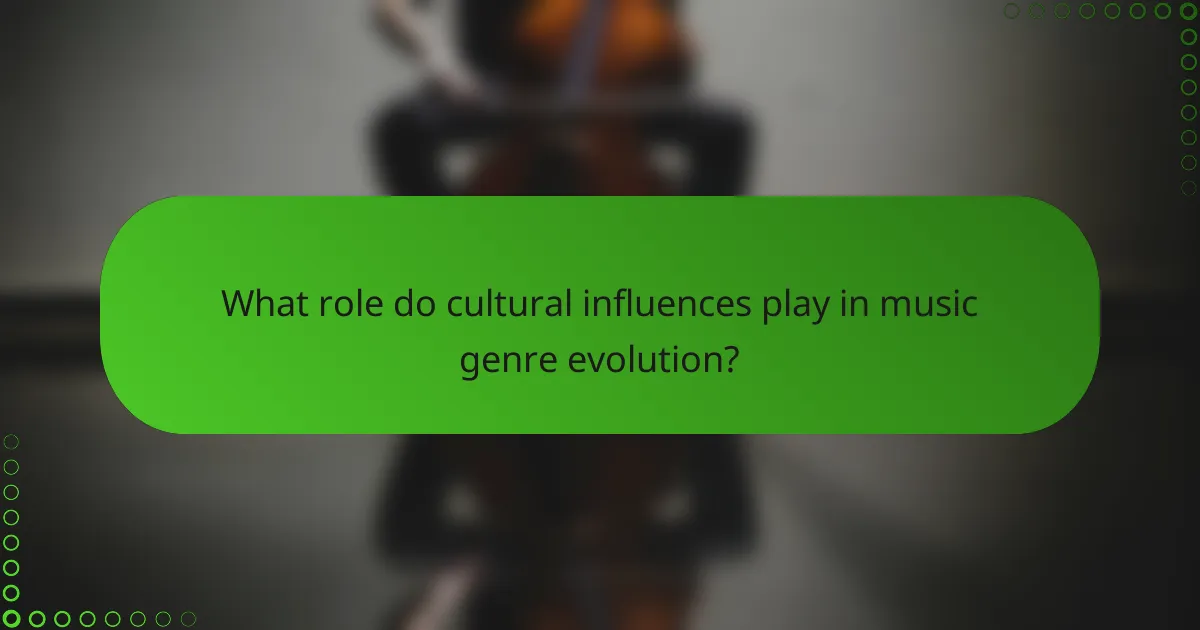
What role do cultural influences play in music genre evolution?
Cultural influences are pivotal in shaping music genres, driving their evolution through the integration of diverse sounds, themes, and practices. These influences stem from historical interactions, migration patterns, and the blending of traditions, leading to the emergence of new styles and subgenres.
Globalization effects
Globalization has significantly impacted music genre evolution by facilitating the exchange of musical ideas across borders. Artists can now access and incorporate sounds from various cultures, leading to hybrid genres that reflect a blend of influences. For example, the rise of reggaeton combines Latin rhythms with hip-hop and dancehall elements, showcasing how global connectivity fosters innovation.
Moreover, streaming platforms allow listeners worldwide to discover and share music, further accelerating the globalization of genres. This interconnectedness can lead to a more diverse musical landscape but may also result in the dilution of traditional sounds.
Regional sounds
Regional sounds play a crucial role in music genre evolution by preserving local traditions while adapting to contemporary influences. Genres like Afrobeat and K-Pop highlight how specific cultural elements can create unique musical identities that resonate with local audiences. These regional sounds often incorporate indigenous instruments and languages, enriching the global music scene.
Artists who draw from their cultural heritage can create authentic music that appeals to both local and international listeners. However, balancing authenticity with broader appeal can be challenging, as artists navigate the expectations of diverse audiences.
Collaboration across genres
Collaboration across genres is a key driver of music genre evolution, allowing artists to experiment and innovate. Cross-genre collaborations can lead to the creation of entirely new styles, as seen in the fusion of country and hip-hop in tracks by artists like Lil Nas X. Such collaborations not only broaden an artist’s reach but also introduce listeners to new sounds and ideas.
However, successful collaborations require a mutual understanding of each genre’s nuances. Artists should be mindful of maintaining their unique identities while embracing the strengths of their collaborators to create a cohesive sound that resonates with fans from both genres.
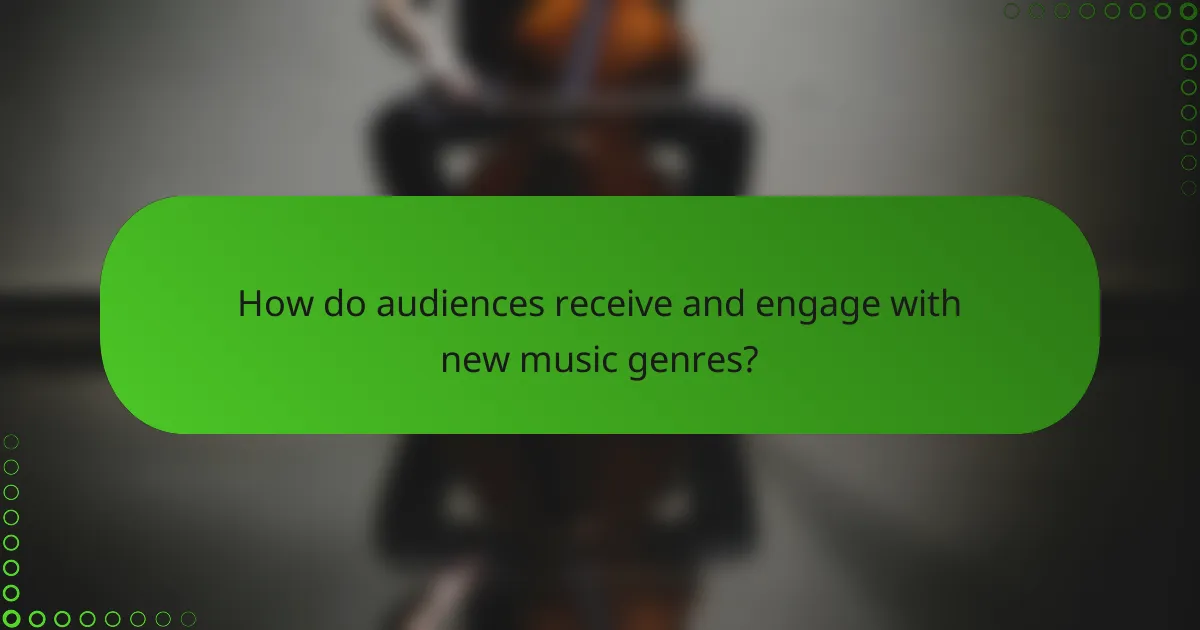
How do audiences receive and engage with new music genres?
Audiences engage with new music genres through various channels, significantly influencing their popularity and acceptance. Key factors include streaming platforms, social media interactions, and live performances, each playing a vital role in shaping listener experiences and preferences.
Streaming data analysis
Streaming data analysis provides insights into how audiences discover and consume new music genres. Platforms like Spotify and Apple Music track user behavior, revealing trends in listening habits, genre popularity, and demographic preferences. For example, a sudden spike in streams for a particular genre can indicate emerging interest, prompting labels and artists to capitalize on that momentum.
Understanding these analytics helps artists and producers tailor their marketing strategies. By identifying which songs resonate with specific demographics, they can create targeted promotional campaigns that enhance audience engagement and drive further exploration of their music.
Social media interactions
Social media plays a crucial role in audience engagement with new music genres. Platforms such as TikTok, Instagram, and Twitter allow fans to share their favorite tracks, create viral challenges, and discuss emerging artists. This organic sharing can lead to rapid genre adoption, as users are influenced by their peers and trending content.
Artists can leverage social media to connect directly with fans, fostering a sense of community around their music. Engaging with followers through live streams, Q&A sessions, and behind-the-scenes content can enhance loyalty and encourage deeper exploration of their work.
Live performances and festivals
Live performances and music festivals are pivotal in introducing audiences to new genres. Events like Coachella and Glastonbury often feature a mix of established and emerging artists, allowing attendees to experience diverse sounds in a communal setting. These performances can create lasting impressions, prompting attendees to explore genres they may not have previously considered.
For artists, participating in festivals can significantly boost visibility and fan engagement. It’s essential to prepare for these performances by understanding the audience’s preferences and curating setlists that showcase the genre’s unique elements, ensuring a memorable experience that encourages further exploration of their music.
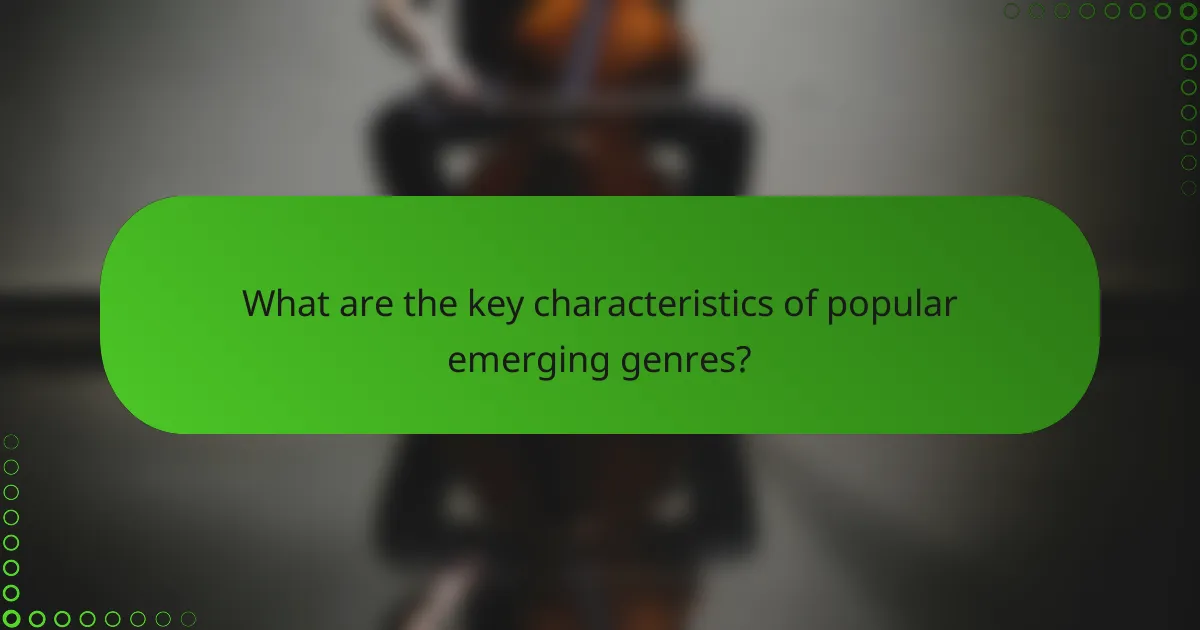
What are the key characteristics of popular emerging genres?
Popular emerging music genres often share distinctive characteristics that set them apart from mainstream styles. These include unique production techniques, thematic lyrical content, and innovative instrumentation that resonate with contemporary audiences.
Production style
The production style in emerging genres frequently emphasizes experimentation and digital innovation. Artists often utilize software tools and plugins to create sounds that blend various musical influences, resulting in a fresh auditory experience. For instance, genres like lo-fi hip-hop and bedroom pop often feature layered textures and ambient sounds that enhance the listening experience.
Producers may also adopt unconventional recording techniques, such as field recordings or the use of vintage equipment, to add character to their tracks. This approach allows for a more personalized sound that reflects the artist’s identity and creative vision.
Lyrical themes
Lyrical themes in emerging genres often explore contemporary issues and personal narratives that resonate with younger audiences. Topics such as mental health, social justice, and identity are commonly addressed, making the music relatable and impactful. For example, artists in the genre of emo rap frequently discuss emotional struggles and personal experiences, creating a deep connection with listeners.
Additionally, many emerging genres incorporate storytelling elements that engage audiences. This narrative-driven approach allows artists to convey their messages in a compelling way, often leading to a stronger emotional response from fans.
Instrumentation
Instrumentation in popular emerging genres tends to blend traditional and modern elements, creating a unique sound palette. For instance, genres like synthwave often combine classic synthesizers with contemporary beats, resulting in a nostalgic yet fresh sound. This fusion of old and new instruments allows for greater creative expression.
Moreover, the use of unconventional instruments or sounds, such as found objects or digital samples, is becoming increasingly common. This trend encourages artists to think outside the box and push the boundaries of what music can be, appealing to adventurous listeners.



